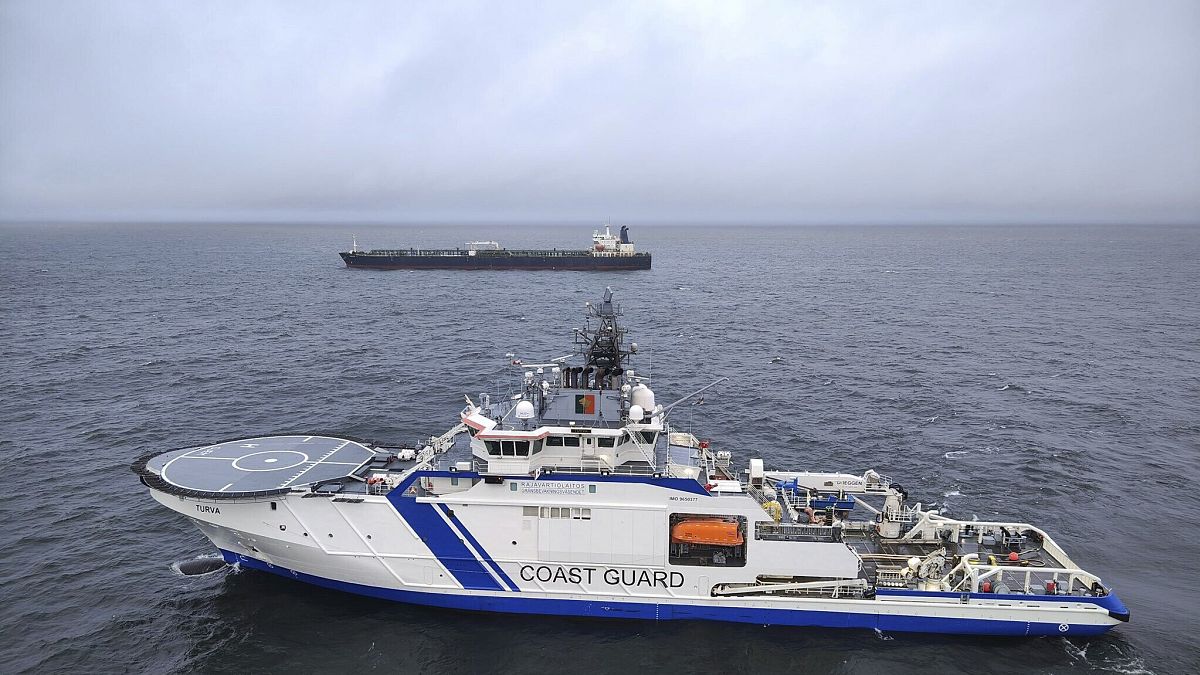For the first time, Anchorage city officials have broadly approved of opening a sanctioned homeless camp. And they’ve set the stage for piloting a new approach that’s starting to be used in cities struggling with homelessness across the country: setting up an area for tiny, prefabricated shelter structures, each designed for one to two people.
Those shelters are likely to be built, shipped and deployed in collaboration with Washington-based company Pallet. They’re increasingly popular as a short-term shelter and transitional housing option.
The modular units are small, without amenities or much storage space, designed to be set up in clusters around shared bathroom facilities and common spaces, which are each included in Pallet’s product line. The company’s founders are explicit that their shelters are only meant to be transitional steps toward real housing options.
“We intentionally created it to look temporary and stripped down,” Pallet CEO Amy King said in an interview. “There’s no bathroom, there’s no kitchen, on purpose, so people don’t stay there forever.”
In spite of the company’s name, the huts are made of aluminum and composite panels, not wooden pallets.
In the first week of June, the Anchorage Assembly passed a measure requesting Mayor Dave Bronson’s administration to consider opening a sanctioned homeless camp in July.
The city could potentially transition that camp into 30 small shelters, each for up to two people, according to the resolution.
:quality(70)/cloudfront-us-east-1.images.arcpublishing.com/adn/2IVALRXT5VH4RBV4NFZ5XD4KK4.jpeg)
Anchorage’s camp would open at an empty city-owned lot in Midtown once considered for a National Archives site — the same area municipal officials recently cleared ahead of a three-day music festival slated for mid-June.
Pallet shelters could be used at the site year-round, officials say. The Assembly’s resolution calls for the city to run the tiny shelter camp through Sept. 1, 2024.
The city hasn’t yet set aside money for the project, and Bronson officials say they aren’t sure it will happen this summer, as the Assembly urged.
But with about 700 people camping and living unsheltered in the city right now, several municipal officials are championing the idea as a creative, quick and less expensive way to get vulnerable homeless residents under a roof.
Where did the idea come from?
The municipality has not tried an idea like this before.
The concept sprouted out of a meeting in February, as the city prepared to close several winter shelters. Members of the Bronson administration suggested setting up one or more sanctioned camps this summer.
At the time, several Assembly members repudiated the idea and expressed serious doubts about the administration’s ability to stand up a successful operation. They pointed to the administration’s abrupt move last summer to direct homeless residents to live in Centennial Park Campground in East Anchorage as the Bronson administration closed the shelter inside Sullivan Arena.
That site saw serious safety issues, including bears raiding camps, a lack of support for vulnerable and elderly residents, theft, violence, drug overdoses and a shootout between police and a man they said they were trying to detain.
“There was pushback in February in particular because the administration mentioned Centennial Park,” said Felix Rivera, chair of the Assembly’s Housing and Homelessness Committee. “Of course, you’re going to get a lot of feedback if you mention something that was a nightmare.”
But what Anchorage Health Department officials had proposed was different — a smaller camp that would include an array of services for residents and “best practices” found in sanctioned encampments in the Lower 48. They also suggested using Pallet shelters or another type of modular structure.
:quality(70)/cloudfront-us-east-1.images.arcpublishing.com/adn/EDNVI7SR35AIRJIVD3S5TVVGAI.jpg)
Local service providers had pushed for a Pallet shelter operation last summer, when Centennial was open to the homeless, said Alexis Johnson, the city’s homeless coordinator. At the time, city officials rejected the idea for several reasons, among them that it did not comport with local land-use codes, she said. But Johnson was intrigued, and health department staff began to do research.
With few options on the table, city officials returned to the idea and included it as a possibility in winter shelter demobilization plans this spring.
“I feel like, for us, this is our first chance of getting it right,” Rivera said of sanctioned camps.
“In this avenue, the administration deserves a lot of credit,” he said.
[City clears homeless camps from Midtown Anchorage park as ACLU files civil rights challenge]
By last week, as it was weighing a measure encouraging the mayor’s administration to further consider a sanctioned camping site, the Assembly had pared down its interest in purchasing tiny modular shelters from 90 units to 30.
Members opted to remove the vendor name, Pallet, from the resolution’s language in order to open bidding on the project to other companies that manufacture small shelters, including any potential local vendors. That push grew from concerns raised by newly elected West Anchorage member Anna Brawley, who felt the city should not be pursuing a sole-source contracting proposition.
But Brawley said that if the structures can hold up in Anchorage’s climate, they could prove a worthy solution for homelessness in the medium-term as the city finds ways to add more permanent housing to its meager supply.
“I think it’s worth exploring because we know our construction costs are really high in Alaska,” she said. “I wouldn’t want to see us pursue something like that at the expense of actual buildings.”
In the end, the city’s choice will likely be Pallet — the company currently has the shelters manufactured and ready to go, according to Rivera.
The city purchasing department will use a bidding process that gives the city more flexibility to pick a vendor based on the need, rather than the typical process that requires the city to go with the lowest bidder, Rivera added.
“Can they actually deliver quickly? For me, that’s a key component that Purchasing needs to look at,” Rivera said.
How are the shelters designed?
Pallet has no track record in Alaska. Though to be fair, just a few years ago they had no track record at all.
Founded in 2016, the company is mission-driven, primarily employing workers who have been homeless, or who have gone through the criminal justice system or substance abuse recovery, according to Pallet’s 2022 impact report.
To date, the company has produced 3,800 shelter units installed in 74 cities.
“The original design was about minimizing costs and maximizing efficiency,” said King, one of the founders.
The company produces two models, one that is 100 square feet and can sleep up to four people, and a more popular design that is 64 square feet and can sleep up to two people. The structures are made of prefabricated panels that are flat-packed for shipping, and assembled with basic tools in as little as an hour, according to the company’s promotional materials. Units can be broken down and rebuilt again and again if, say, they are moved to a different site or a damaged panel needs to be replaced.
“They are mold, rot and pest resistant, and easy to clean,” Pallet says in a product video.
According to King, the units can handle cold winter weather. The company has an upgraded package for its units with extra insulation and more powerful electric heaters, which King said brings the cost to around $12,000 per unit once materials, labor and shipping are factored in. The company says its shelters can maintain an interior temperature of 70 degrees when it’s minus 20 outside.
They have so far sent shelters to Madison, Wisconsin, and Burlington, Vermont, and more are soon going to Rochester, New York, and Boston.
“We have had no complaints that I’m aware of,” King said of the company’s partnerships in northerly cities.
The roofs are tested to handle up to 25 pounds of snow per square foot.
The Pallet shelters require electricity to run their heaters, lights and outlets. The separate bathroom units, which each include two showers, sinks and toilets, can hook into existing sewer lines or be run through mobile septic tanks.
Crucially, the units have locking doors so that residents can reliably leave for work, shopping or appointments and not worry their property will be stolen if they don’t carry it with them, as is often the case at encampments or mass shelters.
But the company is adamant it is selling more than hardware.
“We only build shelters in a village format with on-site services,” according to a company FAQ page.
The units are set up in clusters, administered by a social service provider intended to do on-site casework.
[Assembly members propose sweeping overhaul of zoning rules to address Anchorage housing shortage]
The structures are not apartments or permanent homes, King said — they are transitional steps to help people stabilize enough to guide them into better, longer-term options.
“This is not meant to be a substitute for permanent housing,” King said.
Is the idea working in other U.S. communities?
:quality(70)/cloudfront-us-east-1.images.arcpublishing.com/adn/UHFSVNSPNZBOXD2JDOHU4P5IJM.jpeg)
In December of 2021, Vancouver, Washington, opened its first Pallet shelter community. The city now has two, which it has dubbed “Safe Stay Communities,” and it is slated to open a third this summer. A proposal for a fourth is underway.
Vancouver city officials say the model is a success so far. Calls for police and officer-initiated activity in the area around the first site dropped 30% in the first six months of opening, compared to the previous year, according to the city.
Operated by local nonprofits, each Pallet community has 20 of the modular structures, serving up to 40 individuals.
Adam Kravitz is the executive director of Outsider’s Inn, the Vancouver-area nonprofit running the city’s first Pallet shelter community, The Outpost.
In 2022, its first full year running, The Outpost served 84 people in total, he said. Of those, more than half have left for good reasons: 34 moved into permanent housing, and 14 others left in “positive” exits, such as reuniting with family, he said.
Eleven other people left, not ready for the more structured environment. However, three have since returned, he said.
Residents early on developed their own code of conduct, including a curfew, rules for pets and for refrigerator use — common-sense things, Kravitz said.
The site currently has port-a-potties and hand-washing stations for bathrooms, he said. They’re still working with a vendor to get a mobile bathroom trailer and laundry on-site. For now, they’ve partnered with the local YMCA gym. All residents have memberships and can use the YMCA facilities, including showers, and take free wellness classes, he said.
There’s a community tent and kitchen set up. Nightly meals are delivered and lunch is donated by community groups, but many residents also cook their own meals, Kravitz said.
The Outpost operates sort of like a small gated community. There’s perimeter fencing and security cameras, which are important to the safety of residents, Kravitz said. There’s also a 1,000-foot no camping buffer zone around the site.
Kravitz stressed that The Outpost is not a cluster of tiny homes, it is temporary shelter.
“We want them to be envisioning bigger and better and their new home somewhere else,” he said. “It is a shelter, but when you visit, everybody’s got their own little visual flair on their outside area — chairs and plants and canopies. And people have messages to the world like, ‘Please knock softly,’ or, ‘Careful, there’s a cat sleeping.’ ”
His top pieces of advice for cities and providers looking to open a Pallet shelter operation: “Communicate, communicate, communicate — with both the community at large and with the folks that you’re going to be serving,” he said. “So the provider really spends time investing and listening.”
And, “keep them small and manageable,” Kravitz said.
That allows service providers to do better work, he said.
:quality(70)/cloudfront-us-east-1.images.arcpublishing.com/adn/ASTOFAL5SVHYFOFC3DQN64OKHY.jpeg)
Pallet shelters could fill a hole in Anchorage’s homelessness response system, said Cathleen McLaughlin, CEO of Restorative Reentry Services, which helped the city earlier this year oversee the closure of emergency winter shelters.
Sometimes, people aren’t ready for permanent housing. And some people don’t do well in congregate, low-barrier shelters, she said.
Many people who are homeless have strong, family-like connections and form communities with others living on the streets, McLaughlin said.
“I think for those that need co-living as a lifestyle, it works. For those that aren’t ready for permanent housing, it works. And the third piece is, it’s better than tent camping because you have a door to close and you don’t have to be worried that people are gonna always be stealing your stuff,” McLaughlin said.
They’re also comparatively inexpensive to other types of shelter, are easy to assemble and easy to move, she said. So, if the pilot project at the old National Archives site doesn’t work well for the neighborhood, it could be moved elsewhere.
:quality(70)/cloudfront-us-east-1.images.arcpublishing.com/adn/R3C4JDVSYFF7TIWX37DEX6RGCU.jpeg)
What are the challenges?
For Anchorage, a main hurdle for the proposal right now is funding.
Bronson voiced his support for the idea at the meeting when the measure passed, but warned Assembly members that the city has little, if any, money to spend on it.
The city also hasn’t budgeted for winter shelter, which it is required to open again this fall, said Alexis Johnson, homeless coordinator with the Anchorage Health Department.
She said it’s more likely that Anchorage will stand up a sanctioned camp or Pallet shelters next summer.
“We believe we’ll have funding for it for sure next year. But this year is going to be kind of a struggle,” Johnson said.
Still, it’s less expensive than the city’s former mass shelter at Sullivan Arena, Johnson said.
“We pay $100 a day (per person) to shelter in a mass facility. I mean, over the course of a month, that’s $3,000 a person,” she said. A three- or four-month stay in Sullivan Arena for one person would about equal the cost of one Pallet shelter, she said.
“I think they’re affordable, people get their own private stuff, they get to lock the facility,” she said. “I mean, I think they’re great.”
• • •

:quality(70)/cloudfront-us-east-1.images.arcpublishing.com/adn/QVC5ZEUXJNBM5LGLUMJMQCH4TM.JPG)
:quality(70)/cloudfront-us-east-1.images.arcpublishing.com/adn/QVC5ZEUXJNBM5LGLUMJMQCH4TM.JPG)
























/cdn.vox-cdn.com/uploads/chorus_asset/file/24924653/236780_Google_AntiTrust_Trial_Custom_Art_CVirginia__0003_1.png)




/cdn.vox-cdn.com/uploads/chorus_asset/file/25672934/Metaphor_Key_Art_Horizontal.png)

